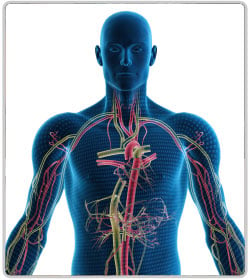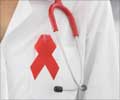HIV and Immune system
- HIV eventually destroys many of the white blood cells, which protect us against disease.
- HIV infection leaves people helpless against many other serious infections and cancers.
- Different viruses invade different kinds of cells. HIV invades and destroys helper T cells, the very cells that direct the body's defenses. By destroying helper T cells, HIV disables the entire immune system that protects us against disease.
- Lymphoid organs play a central role in HIV infection.
- Know Our Body's Defense System: The immune system is made up of many different kinds of white blood cells. White blood cells work together to protect us against disease-causing germs. White blood cells defend against germs.
- The RBC carries heme and iron that help in carrying oxygen around the body. The WBC fights against infection and there are many sub-types of WBC.
- Macrophages identify germs - When a germ invades our bodies, macrophages gobble up the germ and display its surface shape, or antigen, for other immune cells to see.
- Helper T cells direct the defense - Helper T cells spot the foreign antigen on the macrophage and begin to multiply. They alert other white blood cells and direct the body's defense.
- Killer T cells destroy germs Alerted by helper T cells; killer T cells multiply and destroy the invading germs.
- B cells make antibodies - B cells start to make chemicals called antibodies. Antibodies lock onto foreign antigens making it easier for other immune cells to destroy them.
- Working together, our white blood cells can usually destroy invading germs.
T-cells and HIV infection
- There is a significant drop in number of circulating CD4 T cells at this early stage.
- An immune response to HIV occurs 1 week to 3 months after infection, when the levels of CD4 cell increases. But the immune response is unable to clear the infection completely, and HIV-infected cells persist in the lymph nodes.
- This period of clinical latency may last for as long as 10 years. Although very few infected cells are in the blood.
- HIV found in patients with late-stage disease is usually much more virulent and harmful than the strains of virus found early in infection.
- Decrease of CD4 T-lymphocytes causes a decrease in Immune response and affects the lymphoid and non-lymphoid cell functions.
Further Reading:
HIV and B-Cell function:
- AIDS infected persons show an abnormal B cell function.
- It produces an inability to mount an adequate immunoglobulin M (IgM) response against the HIV.
Monocytes and HIV:
- Monocytes and macrophages play a major role in the spread and pathogenesis of HIV infection.
- These phagocytic cells can engulf the virus.
- Monocytes express the CD4 surface antigen and therefore bind to the envelope of HIV.
- The infectivity of monocytes with HIV suggests that the monocyte serves as a major reservoir for HIV in the body.
- Neurologic abnormalities are common in AIDS
- HIV encephalopathy, myelopathy, peripheral neuropathies, and most serious, AIDS dementia complex.
- gp120, may be involved in tissue damage without actual infection of all cells.
- It is speculated that gp120 may activate macrophages, microgilia, and astrocytes and cause the release of cytokines and neurotoxins that injure neighboring neuronal cells.
- In HIV infected individual, a wide range of invivo antigenic stimuli seems to serve as cellular activators.
- Other concomitant viral infections - EB virus, Cytomegalo virus, Herpes simplex virus, or hepatitis B virus can act as cofactors for AIDS.














